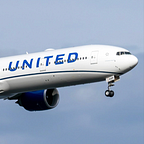How Do Budget Airlines Make Money?
In this recent decade, more and more budget airlines have emerged worldwide, taking the aviation industry by storm. These airlines offer fares as low as a quarter of the price offered by traditional legacy carriers. So how do they profit if a one-way two-hour trip costs only $20? Well, the simple answer is, budget airlines keep their operational costs to the bare minimum through all means necessary.
Aircraft Orders
Budget airlines try to minimize the purchasing cost of their aircraft by all means: they commonly purchase excess aircraft (think of them as “clearance” aircraft) during industry downfalls. For example, following the 9/11 attacks, there was a massive stall worldwide in purchasing aircraft. Taking on this opportunity, Ryanair placed a massive order for 151 Boeing 737s for a heavily discounted price. Although opportunities like these are rare, budget airlines always place large orders at once, giving them bulk discounts.
Why don’t budget airlines simply buy older second-hand planes to reduce the cost of each aircraft?
The answer is two-fold: first, the newest aircraft are always the most efficient. Throughout an aircraft’s 10+ years of service, the cost savings from its increased efficiency greatly offset its hefty purchase price. Not only that, older aircraft require more money, time, and attention to maintain, sometimes even with the possibility of out-of-stock parts, making purchasing new aircraft a far more economical choice.
Fleet Simplicity
Most budget airlines only operate one type of aircraft, or one family of aircraft (e.g. Ryanair, Southwest, and SunCountry only operate the 737 family, while easyJet, Spirit, and jetBlue only operate the A320 family). This reduces the cost needed for staff training — pilots, flight attendants, ground service personnel, and mechanics — and increases the flexibility of flight operations. Remember, the simpler the system, the more time-efficient operations will be.
Cabin Simplicity
Airlines such as Ryanair opt to install bare amenities in their aircraft without sacrificing passenger safety. This often means:
- Non-reclining seats because reclining seats cost more to purchase and require extra maintenance;
- Minimal legroom to maximize the passenger payload;
- No storage pockets, reducing the time needed for cleaning between flights, thus reducing the turn-around time;
- No USB/charging ports;
- No seat-back entertainment;
- No complimentary in-flight snacks or meals;
- and additional advertisement on aircraft to maximize ancillary revenue.
Ancillary Revenue
Budget airlines offer many ancillary services — all services beyond the sale of the seat itself. Budget airlines make a significant portion of their revenue through ancillary services: charging up to $60 for a checked bag, $30 for a carry-on, $40 to choose seats, $20 for a sandwich, $5 for a bottle of water, and more. Some budget airlines have even gone to sell duty-free items and lottery tickets onboard.
Crew Versatility
Flight attendants working for low-cost carriers may also be trained to serve as gate agents or aircraft cleaning workers.
Choice of Airports
Low-cost airlines almost always fly out of regional or secondary city airports due to their cheaper operational fees. Instead of operating out of Heathrow, low-cost airlines such as Ryanair and easyJet operate out of Stansted and Gatwick, which can offer such airlines cheaper fees as there is less demand. If a city only has one major airport, budget airlines opt for early morning or late night slots when the airport is the least busy.
Budget airlines also never use jetbridges and many other airport infrastructures to reduce operational costs. They also park their aircraft at stands farthest from the terminal, which is much cheaper.
Point-to-Point Model
Most budget airlines operate with a point-to-point model instead of the traditional hub-and-spoke model. This means that budget airlines fly to more unique and underserved destinations. Being a budget airline, network expansion also comes easier. A traditional airline only expands to routes with preexisting demand as most of its travelers are regular business travelers, but budget airlines can create demand simply by advertising to tourists that their flights are so cheap. Essentially, budget airlines can make any town a tourist attraction.
Conclusion
Through the establishment of budget airlines, travel by air has become more accessible than ever to the general public. Not only that, this business model proved to be very successful. Recently, legacy carriers have also created budget subsidiaries to join the fun. KLM created Transavia, Lufthansa created Eurowings, and Singapore Airlines created Scoot to appeal to more customers. With both mainline carriers serving regular travelers and low-cost carriers serving thrifty tourists, the aviation industry will continue to open its doors to more customers in the years to come.
